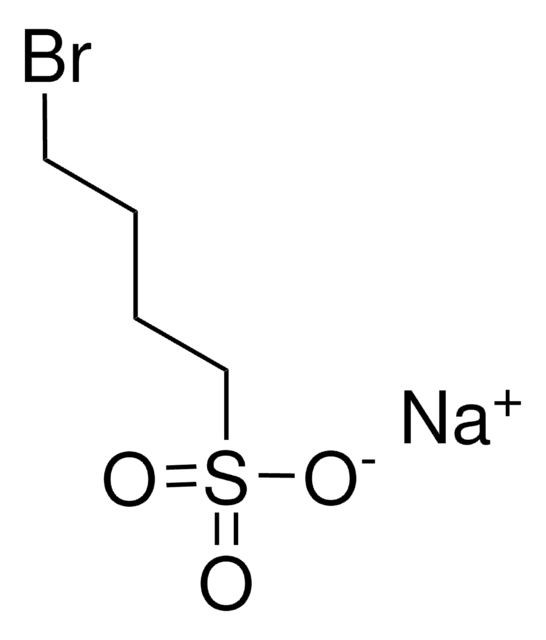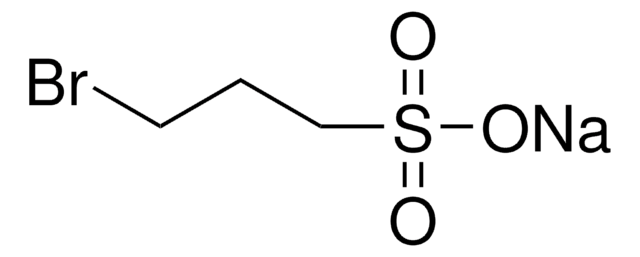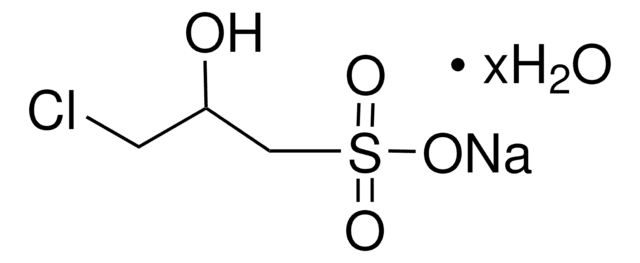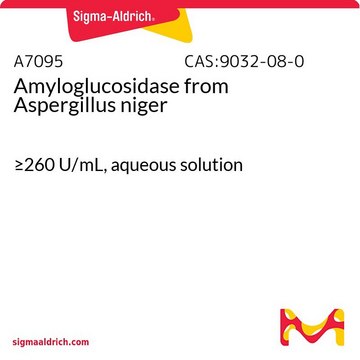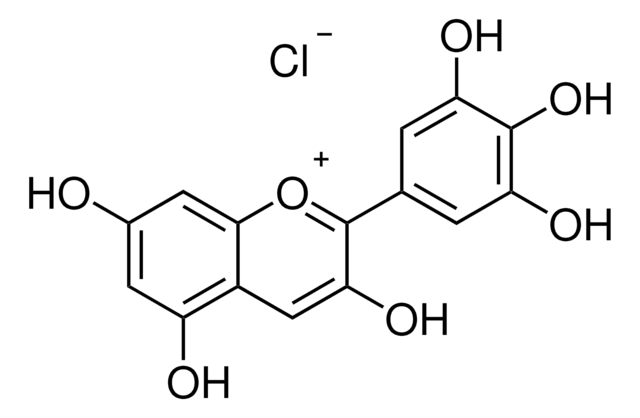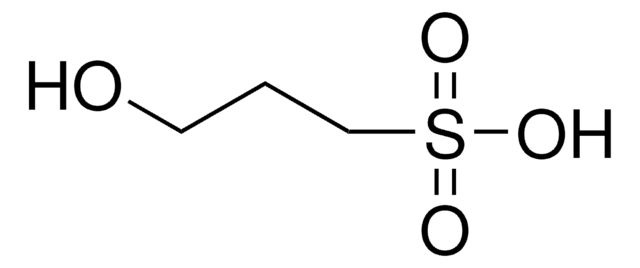137502
Sodium 2-bromoethanesulfonate
98%
Sinonimo/i:
2-Bromoethanesulfonic acid sodium salt
Autenticatiper visualizzare i prezzi riservati alla tua organizzazione & contrattuali
About This Item
Formula condensata:
BrCH2CH2SO3Na
Numero CAS:
Peso molecolare:
211.01
Beilstein:
4590828
Numero CE:
Numero MDL:
Codice UNSPSC:
12352100
ID PubChem:
NACRES:
NA.22
Prodotti consigliati
Livello qualitativo
Saggio
98%
Punto di fusione
283 °C (dec.) (lit.)
Solubilità
water: soluble 100 mg/mL, clear, colorless
Gruppo funzionale
bromo
sulfonic acid
Stringa SMILE
[Na+].[O-]S(=O)(=O)CCBr
InChI
1S/C2H5BrO3S.Na/c3-1-2-7(4,5)6;/h1-2H2,(H,4,5,6);/q;+1/p-1
HNFOAHXBHLWKNF-UHFFFAOYSA-M
Cerchi prodotti simili? Visita Guida al confronto tra prodotti
Categorie correlate
Descrizione generale
Sodium 2-bromoethanesulfonate acts as methanogenesis inhibitor during anaerobic digestion. It reacts with lithium sulfinated polysulfones(PSU) to yield sulfoethylated PSU.
Applicazioni
Sodium 2-bromoethanesulfonate(BES) was used to investigate the effect of BES on inhibition of bacterial growth.
Codice della classe di stoccaggio
13 - Non Combustible Solids
Classe di pericolosità dell'acqua (WGK)
WGK 1
Punto d’infiammabilità (°F)
Not applicable
Punto d’infiammabilità (°C)
Not applicable
Dispositivi di protezione individuale
dust mask type N95 (US), Eyeshields, Gloves
Scegli una delle versioni più recenti:
Possiedi già questo prodotto?
I documenti relativi ai prodotti acquistati recentemente sono disponibili nell’Archivio dei documenti.
I clienti hanno visto anche
Yu Yang et al.
Water research, 47(17), 6790-6800 (2013-10-12)
Nano zero valent iron (NZVI), although being increasingly used for environmental remediation, has potential negative impact on methanogenesis in anaerobic digestion. In this study, NZVI (average size = 55 ± 11 nm) showed inhibition of methanogenesis due to its disruption
J Sipma et al.
Applied microbiology and biotechnology, 64(3), 421-428 (2003-10-14)
The conversion routes of carbon monoxide (CO) at 55 degrees C by full-scale grown anaerobic sludges treating paper mill and distillery wastewater were elucidated. Inhibition experiments with 2-bromoethanesulfonate (BES) and vancomycin showed that CO conversion was performed by a hydrogenogenic
Oleg R Kotsyurbenko et al.
Environmental microbiology, 6(11), 1159-1173 (2004-10-14)
Sites in the West Siberian peat bog 'Bakchar' were acidic (pH 4.2-4.8), low in nutrients, and emitted CH4 at rates of 0.2-1.5 mmol m(-2) h(-1). The vertical profile of delta13CH4 and delta13CO2 dissolved in the porewater indicated increasing isotope fractionation
Kewei Xu et al.
Applied microbiology and biotechnology, 87(6), 2267-2279 (2010-06-19)
The effects of two typical methanogenic inhibitors [2-bromoethanesulfonate (BES) and chloroform (CHCl(3))] on the bacterial populations were investigated using molecular ecological techniques. Terminal restriction fragment length polymorphism analyses (T-RFLP) in combination with clone library showed that both the toxicants not
Tao Yan et al.
FEMS microbiology ecology, 55(2), 248-261 (2006-01-20)
Anaerobic cultures capable of reductively dechlorinating 2,3,4,5-tetrachlorobiphenyl (CB) were enriched from three different sediments, one estuarine, one marine and one riverine. Two different electron donors were used in enrichments with the estuarine sediment (elemental iron or a mixture of fatty
Il team dei nostri ricercatori vanta grande esperienza in tutte le aree della ricerca quali Life Science, scienza dei materiali, sintesi chimica, cromatografia, discipline analitiche, ecc..
Contatta l'Assistenza Tecnica.